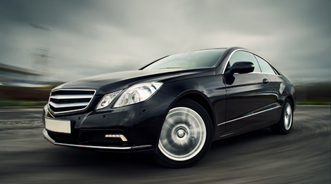Edmunds.com: Incentives Unusually Low in September

By subscribing, you agree to receive communications from Auto Remarketing and our partners in accordance with our Privacy Policy. We may share your information with select partners and sponsors who may contact you about their products and services. You may unsubscribe at any time.
SANTA MONICA, Calif. –
Incentive levels in September were lower than what is usually expected this time of year and the approaches that automakers used for their incentive programs were quite wide-ranging, according to Edmunds.com.
Automakers spent an average of $2,576 per vehicle sold on incentives during the month, which is 4.6 percent softer than the August level. Against the year-ago average, this marked a 6.2-percent decline.
“Typically there is a significant increase in incentives spend from August to September, but that isn’t the case this year,” explained Ivan Drury, an analyst with Edmunds.com. “Interestingly, automakers are adopting very different incentives strategies even as they all try to hold down their incentives levels.”
Edmunds.com pointed to General Motors, which put the lion’s share of its incentives on 2010 vehicles in August and September. This pushed 2010 model-year units off dealer lots in a big way, as this segment currently comprises less than half (48 percent) of GM’s new-vehicle sales, according to officials.
It wasn’t the same story for Toyota.
This automaker spent just $134 more on average on 2010 model-year new units than it did for incentives on the 2011 lineup. So, 2010 model-year units represent almost two-thirds (66 percent) of its current new sales.
Subscribe to Auto Remarketing to stay informed and stay ahead.
By subscribing, you agree to receive communications from Auto Remarketing and our partners in accordance with our Privacy Policy. We may share your information with select partners and sponsors who may contact you about their products and services. You may unsubscribe at any time.
Looking at the overall industry, 2010 model-year vehicle will make up 64 percent of September new-car sales, with 2011 models commanding a 35-percent share, according to Edmunds.com predictions.
Automakers were estimated to have spent an average of $3,021 for incentives on the 2010 new units and put an average of $1,704 on the 2011 units.
This is a change from the September 2009.
During that month, the share that 2009 model-year new units commanded (57 percent) was smaller than what the 2010 class did this past month. Conversely, the 2010 model-year vehicles made up a greater proportion of the spending (42 percent) than the 2011 models did in September 2010.
Basically, looking back at September 2009, the average incentive on 2009 model-year units was $3,425, which is higher than the incentives on the 2010 model-year units during September 2010 ($3,021).
Also, in September 2009, the average incentive on 2010 model-year units was $1,583, which is actually lower than the incentives on the 2011 model-year units during September 2010 ($1,704).
Breaking down September 2010 data in more detail, Edmunds noted that the Big 3 spent an average of $3,204 for each of the models they moved. This was $237 softer than their average for August.
Meanwhile, European brands spent an average of $2,294 on each model sold, versus the $2,523 they devoted to incentives in August.
For Japanese OEMs, they spent an average of $2,119, a slight month-over-month gain (up $12).
Korean companies spent $1,589 per vehicle sold on incentives, down from $1,769 the prior month.
All told, the industry combined to spend $2.41 billion on incentives, Edmunds.com estimated.
The Big 3 was responsible for a 55.7 percent share, which came out to be $1.3 billion. Spending for Japanese was second highest at $765 million. This was good for a 31.7-percent share.
European OEMs totaled $180 million for incentive spending (7.5 percent of the market), while Korean automakers commanded 5.2 percent share at $124 million put toward incentives.
Breaking it down by segment, the heaviest spending was for the premium sports car category, as automakers put an average of $6,472 for each of these that sold. Next on the list was the premium luxury car segment ($4,265).
Conversely, the lowest incentive average was for the subcompact car segment, as automakers spent just $1,112 per vehicle sold. Second from the bottom were sports cars, which had average incentives of $1,423.
When calculating incentives proportionately to sticker price, Edmunds.com found that the heaviest spending was in the large car segment, as their incentives made up 11.9 percent of their average sticker price.
Next on the list were large trucks (11.5 percent). Meanwhile, the smallest incentives, percentage-wise, went to sports cars (3.8 percent). Premium luxury cars were second from the bottom (4.6 percent).
By brand, the greatest incentives were at Hummer, as they put an average of $5,055 in incentives on the hood of each vehicle sold. Saab wasn’t too far behind at $4,997, placing second.
The smallest incentives were found at smart ($211 per vehicle sold). Subaru ($548) was next.
Looking at incentives proportionately to price, Saab topped the list (12.9 percent). Chrysler was No. 2 (12.5 percent).
Again, smart was at the bottom (1.3 percent). Audi was second lowest (1.8 percent).


